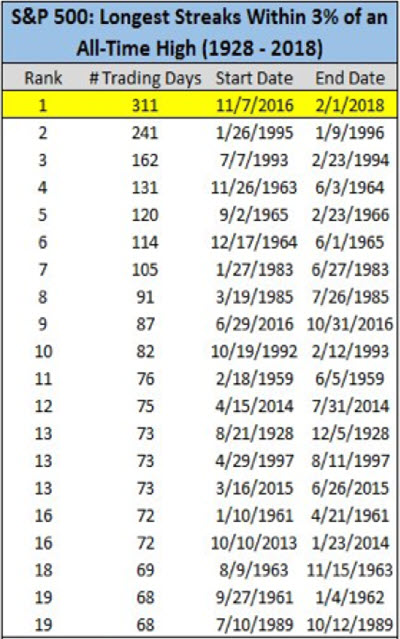How Firm is your Investment Character?
 Sunday, February 25, 2018 at 2:25PM
Sunday, February 25, 2018 at 2:25PM One time Fidelity Magellan Fund manager and investing legend Peter Lynch once said "The real key to making money in stocks is not to get scared out of them."
Benjamin Graham said "What investors need, but few have, is a “firmness of character.”" What he was referring to is the ability for investors to keep their emotions in check.
Investing success is more influenced by DQ than IQ. Our Discipline Quotient, or the ability to remain disciplined during emotional times, is what sets investors apart. Exercising investment discipline is a difficult, but not impossible endeavor.
Buy Low, Sell High
Every investor wants to buy low and sell high, yet it is so much easier to sell low and buy high; it just feels right at the time. Very few investors have the discipline to buy low or sell high because it is contrary to how we feel.
The price to earnings ratio (P/E) is a financial statement term that compares the price of a stock to the annual earnings per share (also called the earnings multiple). Would you rather purchase a basket of stocks with an average P/E ratio of 13 or 34? Well, if you want to buy low, then 13 would be your answer. Yet, in March of 2009 with a market P/E of 13, no one wanted to touch stocks. Why would they? The expectation was that they would be going down a whole lot more.
Fast forward to 2018. Now that the P/E is above 34 and the future looks positive, investors can’t seem to get enough of stocks.1 We often allow feelings, which are fleeting, to drive our investment decisions.
Keeping it Cognitive
One of the best ways to keep emotions at bay is to ask reflective questions. An honest assessment can often dampen emotions (less giddy during good times, less fearful during bad times), and empower you to make more thoughtful decisions.
Questioning valuation, investor sentiment, debt etc… can engage the thinking brain (which forces emotions out), and give us a chance to analyze the situation. We can then calculate the actual risk, rather than rely on our emotionally skewed perception of risk.
Knowing Yourself
Our perception of risk is highly fluid – it’s based on mood, media headlines and expectations. As humans, we tend to perceive less risk when times are good and overestimate risk when times are bad.
We are all influenced by emotions, especially with respect to our own money. That’s just part of being human. As your advisor, one of my primary roles is to help you remain disciplined and stick to your plan. Together, we can think things through and ensure that decisions are based on sound judgement and fair valuations, not on how we feel.
If you would like to review your current investment portfolio or discuss any other financial planning matters, please don’t hesitate to contact us or visit our website at http://www.ydfs.com. We are a fee-only fiduciary financial planning firm that always puts your interests first. If you are not a client yet, an initial consultation is complimentary and there is never any pressure or hidden sales pitch. We start with a specific assessment of your personal situation. There is no rush and no cookie-cutter approach. Each client is different, and so is your financial plan and investment objectives.
(1) P/E calculations based on Shiller method for S&P 500 Index. The Standard & Poor’s 500 Index is a capitalization weighted index of 500 stocks designed to measure performance of the broad domestic economy through changes in the aggregate market value of 500 stocks representing all major industries. All indices are unmanaged and may not be invested into directly.
Information provided by The Emotional Investor, a member of The Behavioral Finance Network. Used with permission.
